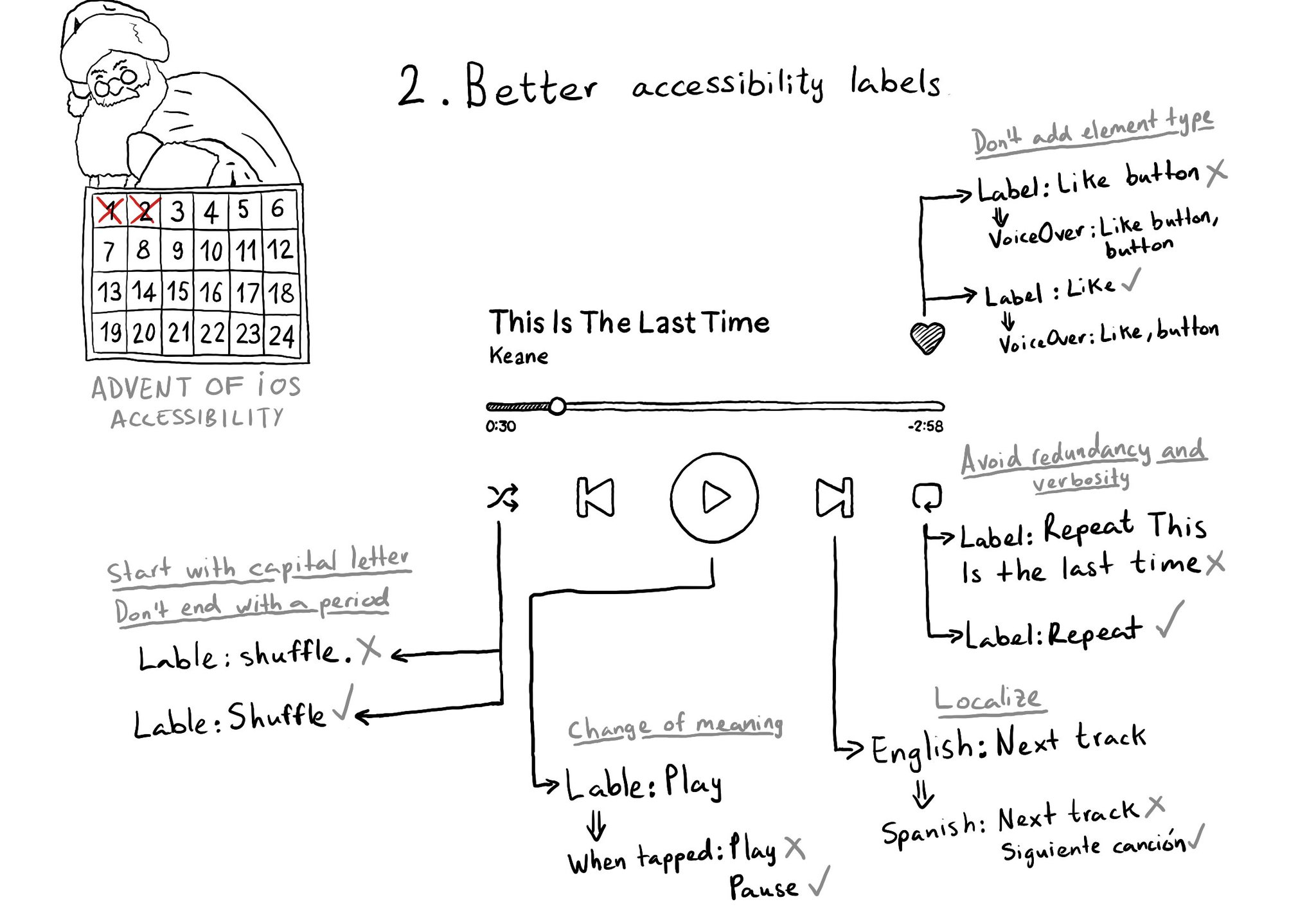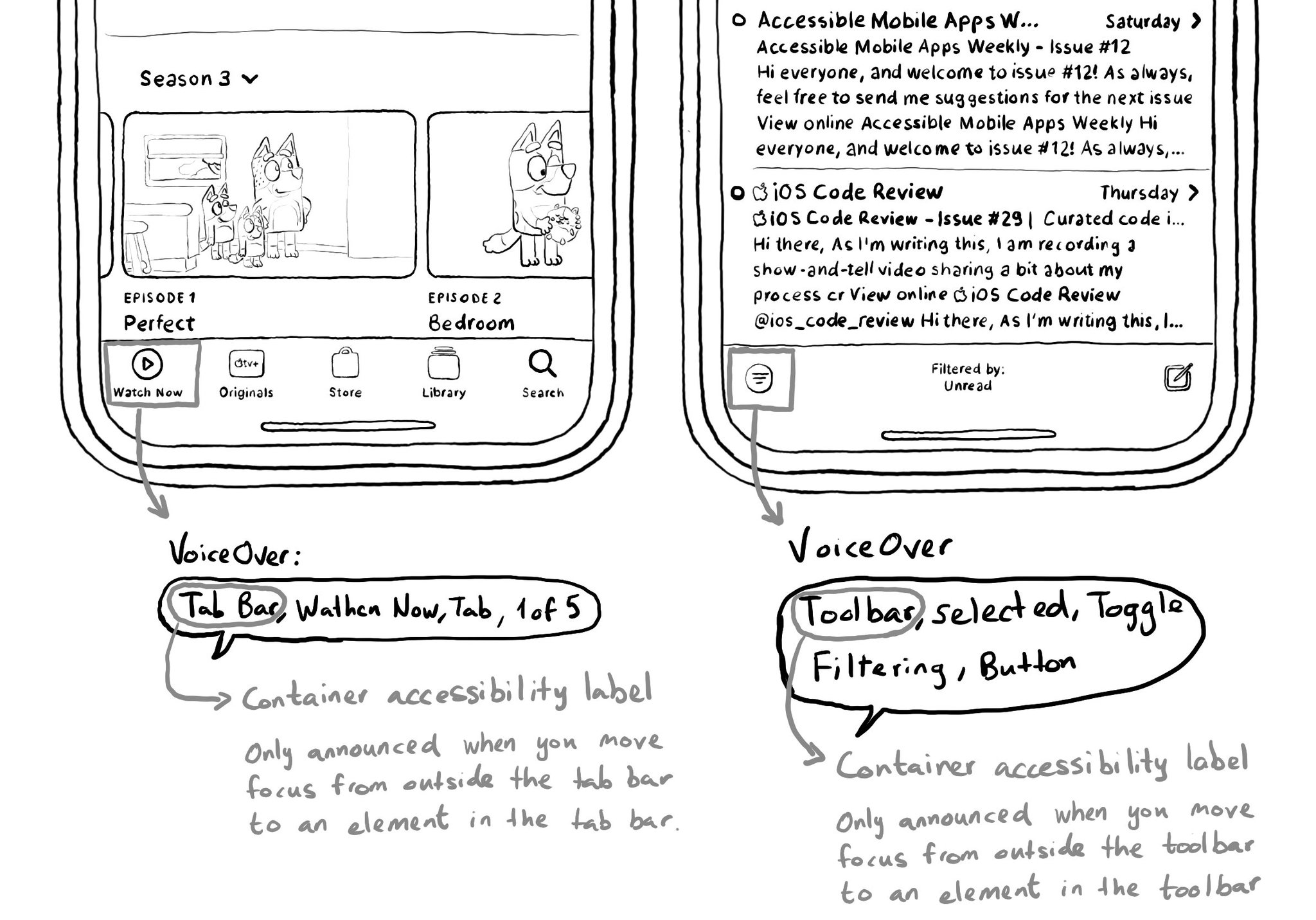An accessibility trait is the role of the component. Among other things, it gives the user information on how they can interact (or not) with it. When using VoiceOver, the trait is usually (not always) read after the accessibility label.
At the time of writing this tweet, there are 18 different accessibility traits: https://developer.apple.com/documentation/uikit/uiaccessibilitytraits
Some examples are: button, header, selected, adjustable or not enabled.
You may also find interesting...

Some recommendations for improving your accessibility labels: don't add the element type, avoid redundancy and verbosity, localize... @MobileA11y has an excellent blog post on it: https://mobilea11y.com/blog/writing-great-labels/ @jordyn2493 has a great video too: https://developer.apple.com/videos/play/wwdc2019/254/

VoiceOver announces "Tab bar" or "Toolbar", the first time you select an element in one of these components. If you are implementing your custom versions of these, you can mirror this behaviour, as seen in previous tweets. https://x.com/dadederk/status/1558045414082871298?s=20&t=LA95j22apvWsUqShqWGBzA
UINotificationFeedbackGenerator has a “success” feedback type. Consider using it when a task was performed successfully together with any other visuals or sound. The use of multiple modes just makes it easier for everyone to understand your app.